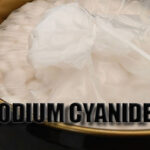
In the realm of lepidolite flotation, one condition stands out as paramount: the selection of the pH level. This parameter is not just a number; it wields significant influence over the flotation process, determining the success of separating lepidolite from associated minerals.
The reason pH is so crucial lies in its impact on the surface potential of quartz, mica, and feldspar. Amine collectors used in the flotation process carry a positive charge, while silicate minerals, including the ones mentioned, are negatively charged. Thanks to the electrostatic force, an adsorption effect occurs, enabling the separation of lepidolite from feldspar and quartz based on this charge difference.
Analyzing the mineral composition of lepidolite – bearing ore through X – ray mineral analysis provides valuable insights. If the quartz content in the ore exceeds 50%, it’s a clear indication that the current pH value isn’t optimal. Miners should then promptly adjust the pH to ensure efficient flotation, maximizing the recovery of lepidolite while minimizing the presence of unwanted gangue minerals. Understanding and precisely controlling the pH level is thus essential for achieving high – quality results in lepidolite flotation operations.




